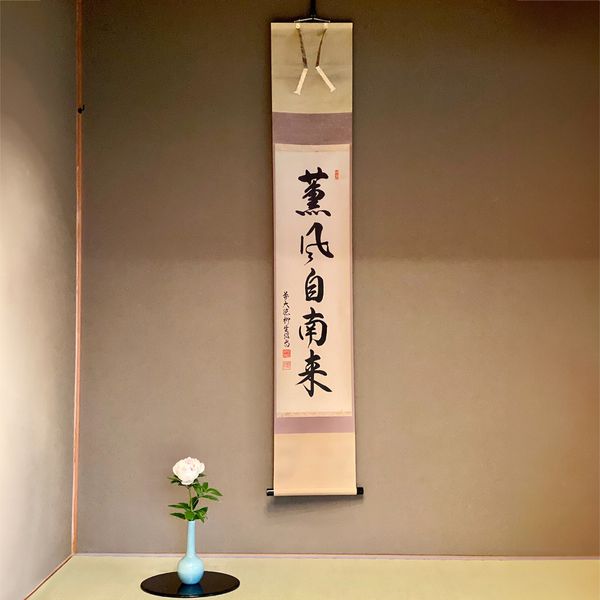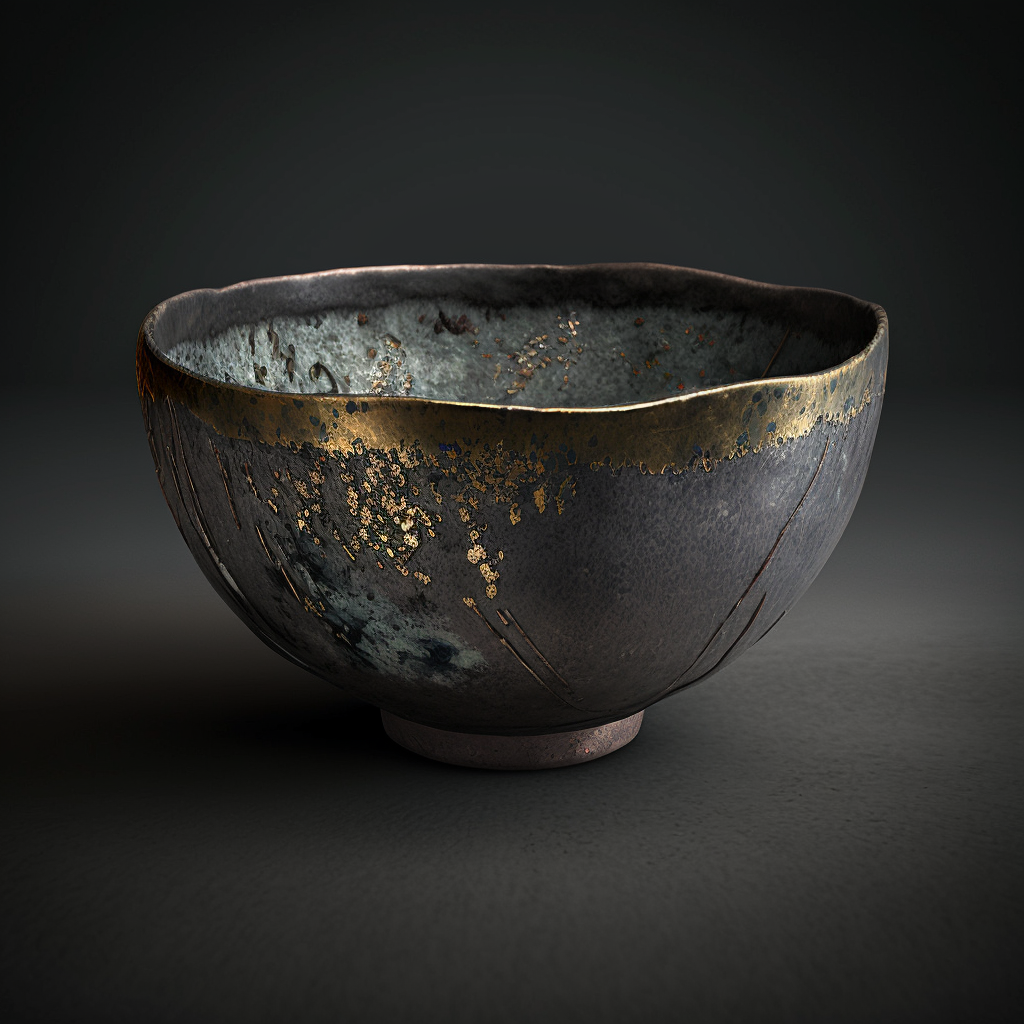Kakemono, or painted hanging scrolls, are a traditional Japanese art form that dates back over a thousand years. These unique works of art, created on silk or paper supports, offer a window into the culture, beauty and spirituality of Japan. In this article, we will explore the history, techniques, and meaning of kakemono in detail.
Historical Origins
Kakemono has its origins in China, but has become a distinctly Japanese art form over time. They were initially used to display poems or calligraphy during the Japanese imperial court era. During the Heian era (794-1185), they became essential elements of Japanese interiors, particularly in Buddhist temples and homes of the nobility.
Structure and Composition
A kakemono is composed of a painting or calligraphy mounted on a vertical scroll. It is traditionally hung on a tokonoma, a decorative niche in a Japanese room. Kakemono are designed to be seen rolled up at the top and unrolled to be viewed from the bottom up. The ends of the roll are attached to wooden rods, with silk hanging cords.
The Subjects of Kakemono
The subjects of kakemono are varied and can include landscapes, flowers, birds, historical figures, nature scenes and calligraphy. Each kakemono is unique and can represent a particular moment or emotion that the artist wishes to express. Landscape kakemono, in particular, are valued for their ability to evoke atmosphere and emotion.
Creation Techniques
Creating a kakemono is a painstaking process that requires artistic mastery. The paintings are generally made with Chinese inks or traditional Japanese pigments. Artists use horse or goat hair brushes to create delicate lines and subtle gradients. Calligraphers also use special techniques to create elegant and expressive characters.
Cultural and Spiritual Significance
Kakemono play an important role in Japanese culture. They are often used to express wishes for good fortune, prosperity or protection. In Buddhist temples, they may be used to convey religious teachings. Kakemono are also used to mark special occasions such as weddings, births or tea ceremonies.
Preservation and Appreciation
Kakemono are precious works of art that require careful care to preserve them. They should be protected from direct sunlight, humidity and dust. Collectors and lovers of Japanese art appreciate the beauty and depth of kakemono, which continue to inspire and amaze people around the world.
Kakemono are a remarkable expression of Japanese art and culture. These painted hanging scrolls offer a glimpse into Japan’s rich artistic and spiritual tradition, while capturing the fleeting beauty of nature and life. They embody the harmonious fusion of calligraphy, painting and poetry, and continue to fascinate those who contemplate them.



